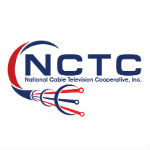 A new Comcast, NCTC Agreement will provide the NCTC’s small cableco members with advanced technology that reduces the bandwidth and equipment needed to support video services. As Comcast Wholesale explains in a press release, the cablecos can use the reclaimed bandwidth and equipment to offer additional advanced services such as video on demand or higher-speed broadband based on DOCSIS 3.1.
A new Comcast, NCTC Agreement will provide the NCTC’s small cableco members with advanced technology that reduces the bandwidth and equipment needed to support video services. As Comcast Wholesale explains in a press release, the cablecos can use the reclaimed bandwidth and equipment to offer additional advanced services such as video on demand or higher-speed broadband based on DOCSIS 3.1.
Several hundred members of the National Cable Television Cooperative (NCTC) use the HITS digital video platform from Comcast Wholesale, a Comcast Wholesale spokeswoman said in an email to Telecompetitor. HITS is delivered from a centralized platform operated by Comcast Wholesale, an approach that minimizes the investment and resources required for the smaller cablecos to offer digital video.
The Comcast, NCTC agreement builds on a 20-year relationship between Comcast Wholesale and NCTC.
The Comcast, NCTC Agreement
The HITS platform is being upgraded to transition six remaining multiplexes of 64 QAM HITS services to 256 QAM DVB-S2 technology. Already underway, the upgrade will be completed by next month, Comcast Wholesale said.
“Each transponder and multiplex has more services than before, thereby increasing the amount of services per QAM, and freeing up bandwidth for other uses,” the Comcast Wholesale spokeswoman said. She noted that “there are now 14 channels per mux rather than 10-12 channels/mux as was the case previously.”
NCTC members that use the HITS platform will be able to extend the life of current customer premises equipment (CPE) deployments, the spokeswoman said. Content distribution will continue in MPEG-2 format, which means that many of the MPEG-2 set-top boxes in the field will be supported, she noted.
Asked about newer MPEG-4 technology, the spokeswoman noted that “if we were to upgrade to MPEG-4 for this market, there would be significant CPE replacement required.” She added that “[t]he advantage of the upgrade is the fact that we can include more channels in the same bandwidth without requiring the field to replace a significant portion of their CPE, which [can] be very expensive and may not be feasible for smaller operators.”
The spokeswoman does not expect the offer to significantly impact the number of NCTC members that use HITS. “We anticipate that the majority of members will continue to use the platform,” she said. “When we upgraded our first multiplexes in 2013, we maintained the majority of affiliates. Because HITS continues to offer cable operators a cost-effective solution for managing services and reclaiming bandwidth, we expect a similar response for this upgrade. Most of the loss we have experienced has been the result of trends in the industry such as headend consolidation.”

